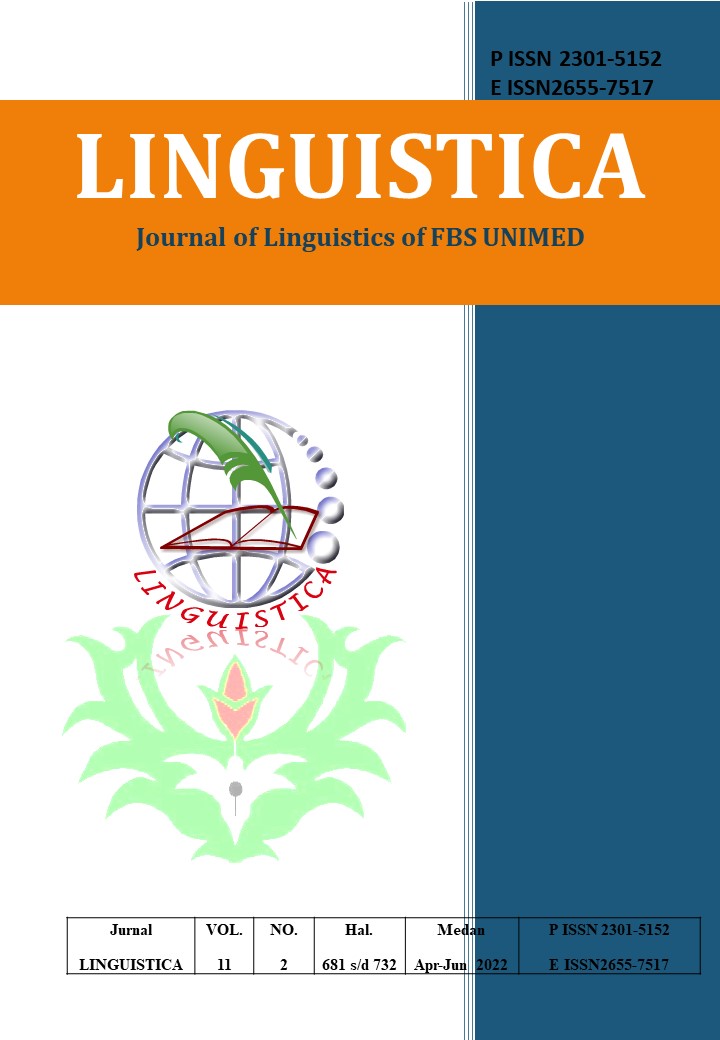POLITENESS STRATEGIES USED BY THE MAIN CHARACTERS IN FINDING OHANA (2021) MOVIE
DOI:
https://doi.org/10.24114/jalu.v11i2.37729Abstract
This study was conducted by using descriptive qualitative method. It was concerned with the description of the data in the form of utterances prodused by the main characters in Finding Ohana (2021) Movie. In conducting this research, the researcher (1) found out the types of politeness strategy in Finding Ohana (2021) Movie. (2) described the realization types of politeness strategies in Finding Ohana (2021) Movie. (3) explain the reason why the types of politeness strategies using in Finding Ohana (2021) Movie. The data of this research was the utterances by the main characters in the movie, that was English subtitle. In the application of the politeness strategies, the Finding Ohana (2021) Movie utterances mostly applied Bald on Record strategy. The result showed that most dominant type of politeness strategies is Bald on Record strategy (43,3%). Consequtively the percentage of Positive Politeness strategy was (36.1%). The percentage of Negative Politeness was (14,4%). The lowest percentage of politeness strategy is Off Record with (6.2%). The reason why the types of politeness strategies using in the Finding Ohana (2021) movie, instead of each politeness strategies has sub-strategies which explained those utterances contained politeness strategies and also influenced by payoffs and sociological variablesDownloads
Issue
Section
Articles
License
Copyright (c) 2022 Nurmaida Panjaitan, Elisa Betty Manullang

This work is licensed under a Creative Commons Attribution-ShareAlike 4.0 International License.
Authors who publish with this journal agree to the following terms:
- Authors retain copyright and grant the journal the right of first publication with the work simultaneously licensed under a Creative Commons Attribution License that allows others to share the work with an acknowledgment of the work's authorship and initial publication in this journal.
- Authors are able to enter into separate, additional contractual arrangements for the non-exclusive distribution of the journal's published version of the work (e.g., post it to an institutional repository or publish it in a book), with an acknowledgment of its initial publication in this journal.
- Authors are permitted and encouraged to post their work online (e.g., in institutional repositories or on their website) prior to and during the submission process, as it can lead to productive exchanges, as well as earlier and greater citation of published work (See The Effect of Open Access).
- This work is licensed under a Creative Commons Attribution-ShareAlike 4.0 International License.

